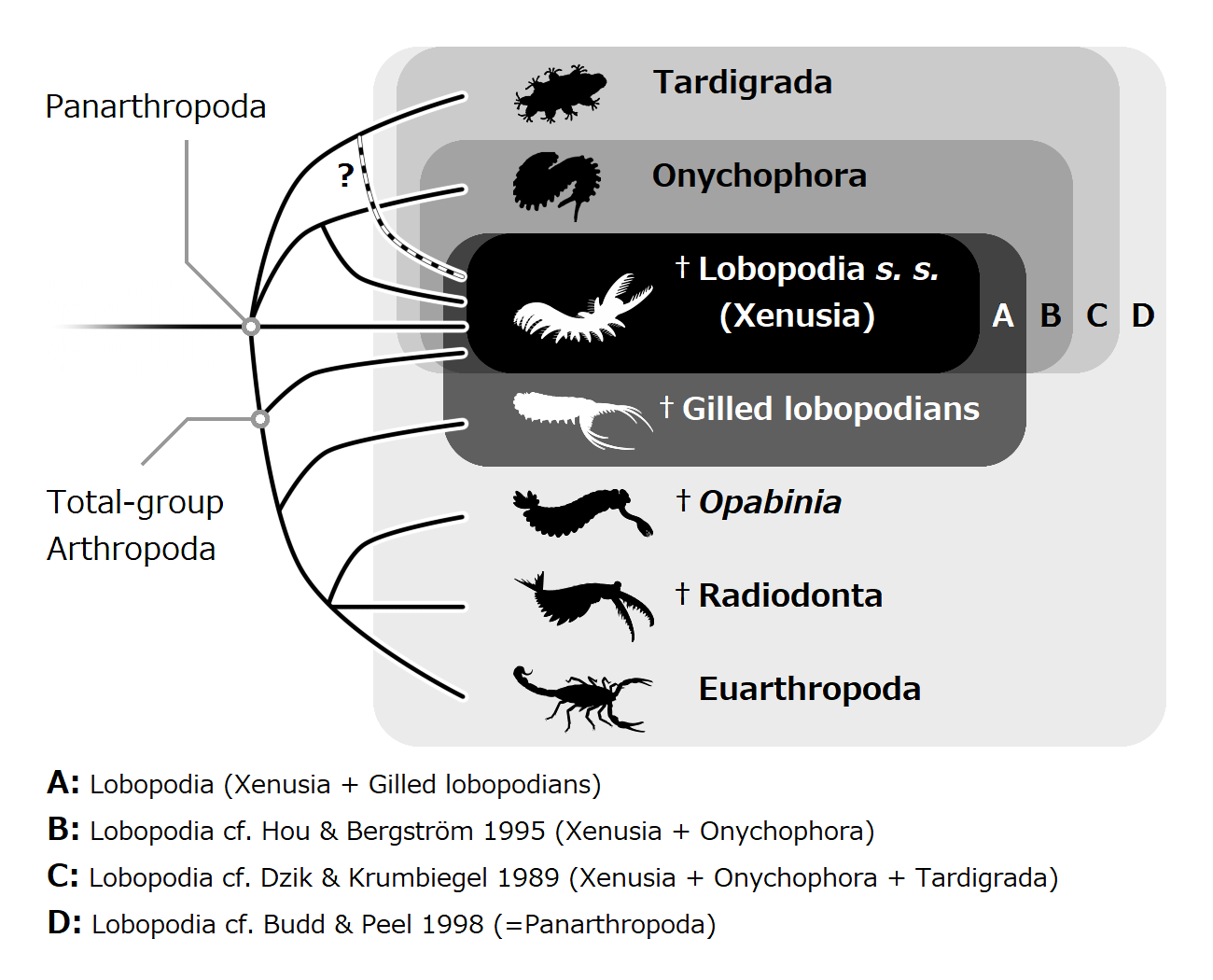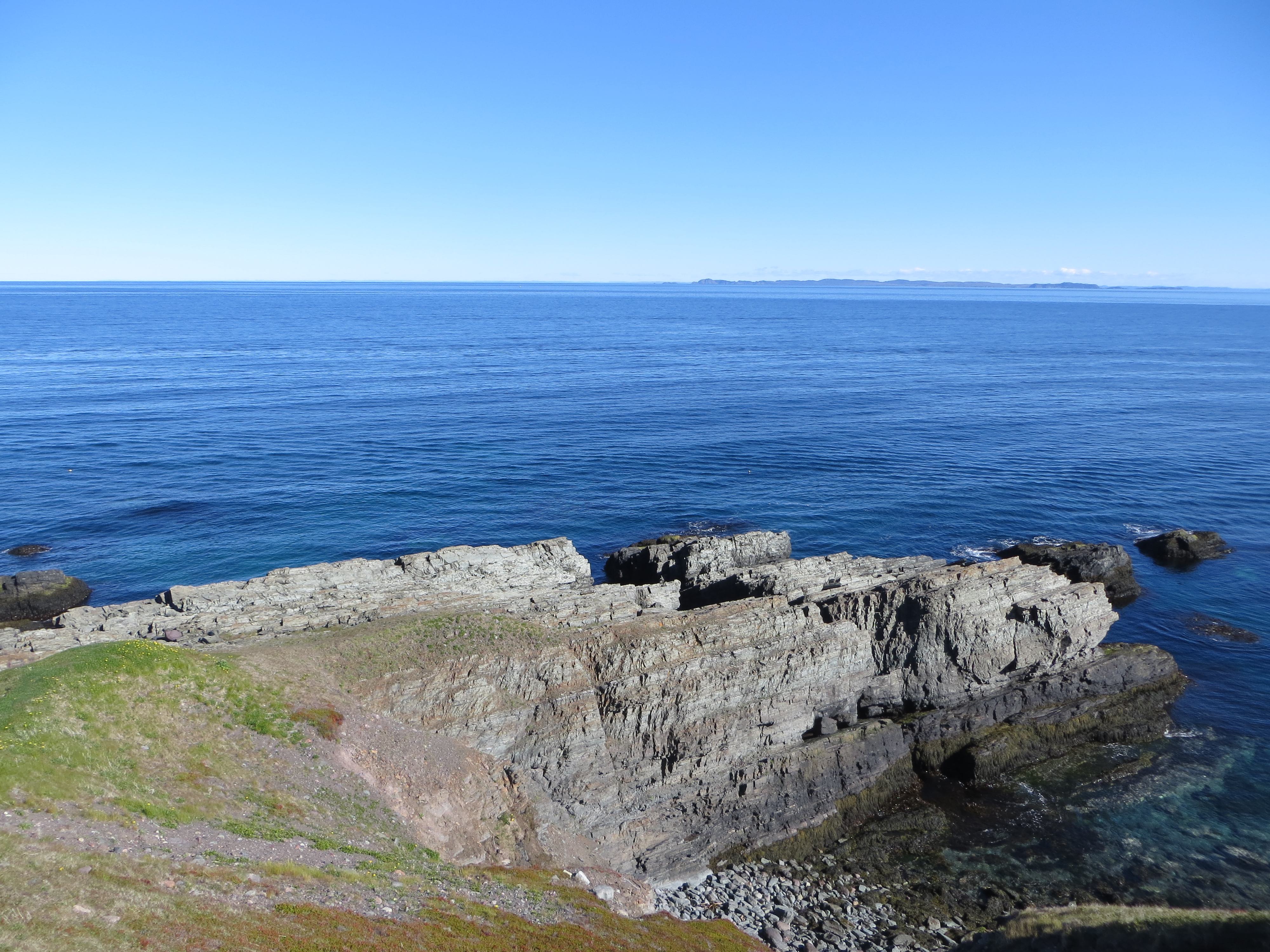|
Graham Budd
Graham Edward Budd is a British palaeontologist. He is Professor and head of palaeobiology at Uppsala University. Budd's research focuses on the Cambrian explosion and on the evolution and development, anatomy, and patterns of diversification of the Ecdysozoa, a group of animals that include arthropods. Life and work Budd was born on 7 September 1968 in Colchester (Essex). He obtained his undergraduate degree at the University of Cambridge and remained there, in the Department of Earth Sciences, to continue his studies at a doctoral level by investigating the Sirius Passet fossil lagerstätte from the Cambrian of North Greenland. He finished his doctorate in 1994, with one of the findings being a new species of lobopodian, ''Kerygmachela''. Budd then moved to Sweden as a postdoc along with his PhD supervisor John Peel. Together with Sören Jensen he reintroduced the concepts of stem and crown groups to phylogenetics and is a major critic of molecular clocks current u ... [...More Info...] [...Related Items...] OR: [Wikipedia] [Google] [Baidu] |
Colchester
Colchester ( ) is a city in northeastern Essex, England. It is the second-largest settlement in the county, with a population of 130,245 at the 2021 United Kingdom census, 2021 Census. The demonym is ''Colcestrian''. Colchester occupies the site of Camulodunum, the first Colonia (Roman), major city in Roman Britain and its first capital. Colchester therefore claims to be Britain's first city. It has been an important military base since the Roman Empire, Roman era, with Colchester Garrison currently housing the 16th Air Assault Brigade (United Kingdom), 16th Air Assault Brigade. On the River Colne, Essex, River Colne, Colchester is northeast of London. It is connected to London by the A12 road (England), A12 road and the Great Eastern Main Line railway. Colchester is less than from London Stansted Airport and from the port of Harwich. Attractions in and around the city include St Botolph's Priory, Colchester Zoo, and several art galleries. Colchester Castle was constructe ... [...More Info...] [...Related Items...] OR: [Wikipedia] [Google] [Baidu] |
Essex
Essex ( ) is a Ceremonial counties of England, ceremonial county in the East of England, and one of the home counties. It is bordered by Cambridgeshire and Suffolk to the north, the North Sea to the east, Kent across the Thames Estuary to the south, Greater London to the south-west, and Hertfordshire to the west. The largest settlement is Southend-on-Sea, and the county town is Chelmsford. The county has an area of and a population of 1,832,751. After Southend-on-Sea (182,305), the largest settlements are Colchester (130,245), Basildon (115,955) and Chelmsford (110,625). The south of the county is very densely populated, and the remainder, besides Colchester and Chelmsford, is largely rural. For local government purposes Essex comprises a non-metropolitan county, with twelve districts, and two unitary authority areas: Thurrock Council, Thurrock and Southend-on-Sea City Council, Southend-on-Sea. The districts of Chelmsford, Colchester and Southend have city status. The county H ... [...More Info...] [...Related Items...] OR: [Wikipedia] [Google] [Baidu] |
Acta Zoologica
''Acta Zoologica'' is a peer-reviewed scientific journal published by Wiley-Blackwell on behalf of the Royal Swedish Academy of Sciences and the Royal Danish Academy of Sciences and Letters. It is one of the world's leading zoological journals and focuses on animal development, structure, and function, including physiological organization. It primarily publishes original research papers, but occasionally also publishes review articles. Increasingly, it has concentrated on animal development, with emphasis on the functional, comparative, and phylogenetic aspects. The editor-in-chief is Lennart Olsson (University of Jena). History The journal was established in 1920 with Nils Holmgren serving as the first editor. In 1980, the journal absorbed ''Zoon : a journal of zoology'' which ran 1973–1979 and was a continuation of the publication Zoologiska Bidrag från Uppsala (1911-1972). Abstracting and indexing The journal is abstracted and indexed in: According to the ''Journal C ... [...More Info...] [...Related Items...] OR: [Wikipedia] [Google] [Baidu] |
Molecular Clock
The molecular clock is a figurative term for a technique that uses the mutation rate of biomolecules to deduce the time in prehistory when two or more life forms diverged. The biomolecular data used for such calculations are usually nucleotide sequences for DNA, RNA, or amino acid sequences for proteins. Early discovery and genetic equidistance The notion of the existence of a so-called "molecular clock" was first attributed to Émile Zuckerkandl and Linus Pauling who, in 1962, noticed that the number of amino acid differences in hemoglobin between different lineages changes roughly linearly with time, as estimated from fossil evidence. They generalized this observation to assert that the rate of evolutionary change of any specified protein was approximately constant over time and over different lineages (known as the molecular clock hypothesis). The genetic equidistance phenomenon was first noted in 1963 by Emanuel Margoliash, who wrote: "It appears that the number ... [...More Info...] [...Related Items...] OR: [Wikipedia] [Google] [Baidu] |
Phylogenetics
In biology, phylogenetics () is the study of the evolutionary history of life using observable characteristics of organisms (or genes), which is known as phylogenetic inference. It infers the relationship among organisms based on empirical data and observed heritable traits of DNA sequences, protein amino acid sequences, and morphology. The results are a phylogenetic tree—a diagram depicting the hypothetical relationships among the organisms, reflecting their inferred evolutionary history. The tips of a phylogenetic tree represent the observed entities, which can be living taxa or fossils. A phylogenetic diagram can be rooted or unrooted. A rooted tree diagram indicates the hypothetical common ancestor of the taxa represented on the tree. An unrooted tree diagram (a network) makes no assumption about directionality of character state transformation, and does not show the origin or "root" of the taxa in question. In addition to their use for inferring phylogenetic pa ... [...More Info...] [...Related Items...] OR: [Wikipedia] [Google] [Baidu] |
Crown Group
In phylogenetics, the crown group or crown assemblage is a collection of species composed of the living representatives of the collection, the most recent common ancestor of the collection, and all descendants of the most recent common ancestor. It is thus a way of defining a clade, a group consisting of a species and all its extant or extinct descendants. For example, Neornithes (birds) can be defined as a crown group, which includes the most recent common ancestor of all modern birds, and all of its extant or extinct descendants. The concept was developed by Willi Hennig, the formulator of phylogenetic systematics, as a way of classifying living organisms relative to their extinct relatives in his "Die Stammesgeschichte der Insekten", and the "crown" and "stem" group terminology was coined by R. P. S. Jefferies in 1979. Though formulated in the 1970s, the term was not commonly used until its reintroduction in 2000 by Graham Budd and Sören Jensen. Contents of the crow ... [...More Info...] [...Related Items...] OR: [Wikipedia] [Google] [Baidu] |
Sören Jensen
Sören is a municipality in the district of Rendsburg-Eckernförde, in Schleswig-Holstein, Germany Germany, officially the Federal Republic of Germany, is a country in Central Europe. It lies between the Baltic Sea and the North Sea to the north and the Alps to the south. Its sixteen States of Germany, constituent states have a total popu .... References Rendsburg-Eckernförde {{RendsburgEckernförde-geo-stub ... [...More Info...] [...Related Items...] OR: [Wikipedia] [Google] [Baidu] |
Postdoctoral Researcher
A postdoctoral fellow, postdoctoral researcher, or simply postdoc, is a person professionally conducting research after the completion of their doctoral studies (typically a PhD). Postdocs most commonly, but not always, have a temporary academic appointment, sometimes in preparation for an academic faculty position. According to data from the US National Science Foundation, the number of holders of PhD in biological sciences who end up in tenure track has consistently dropped from over 50% in 1973 to less than 20% in 2006. They continue their studies or carry out research and further increase expertise in a specialist subject, including integrating a team and acquiring novel skills and research methods. Postdoctoral research is often considered essential while advancing the scholarly mission of the host institution; it is expected to produce relevant publications in peer-reviewed academic journals or conferences. In some countries, postdoctoral research may lead to further for ... [...More Info...] [...Related Items...] OR: [Wikipedia] [Google] [Baidu] |
Kerygmachela
''Kerygmachela kierkegaardi'' is a Kerygmachelidae, kerygmachelid Lobopodia#Gilled lobopodians, gilled lobopodian from the Cambrian Stage 3 aged Sirius Passet Lagerstätte in northern Greenland. Its anatomy strongly suggests that it, along with its relative ''Pambdelurion whittingtoni'', was a close relative of radiodont (''Anomalocaris'' and relatives) and euarthropods. The Generic name (biology), generic name "''Kerygmachela''" derives from the Greek language, Greek words ''Kerygma'' (proclamation) and ''Chela'' (claw), in reference to the flamboyant frontal appendages. The Specific name (zoology), specific name, "''kierkegaardi''" honors Denmark, Danish philosopher Søren Kierkegaard. Morphology The head of ''Kerygmachela'' possesses a pair of well-developed frontal appendages which correspond to those of other Dinocaridida, dinocaridids and Lobopodia#Siberion and similar taxa, siberiid lobopodians. Each of them terminates in a series of long spines. A pair of sessile, sli ... [...More Info...] [...Related Items...] OR: [Wikipedia] [Google] [Baidu] |
Lobopodia
Lobopodians are members of the informal group Lobopodia (), or the formally erected phylum Lobopoda Cavalier-Smith (1998). They are panarthropods with stubby legs called lobopods, a term which may also be used as a common name of this group as well. While the definition of lobopodians may differ between literatures, it usually refers to a group of soft-bodied, marine worm-like fossil panarthropods such as '' Aysheaia'' and '' Hallucigenia''. However, other genera like '' Kerygmachela'' and '' Pambdelurion'' (which have features similar to other groups) are often referred to as “gilled lobopodians”. The oldest near-complete fossil lobopodians date to the Lower Cambrian; some are also known from Ordovician, Silurian and Carboniferous Lagerstätten. Some bear toughened claws, plates or spines, which are commonly preserved as carbonaceous or mineralized microfossils in Cambrian strata. The grouping is considered to be paraphyletic, as the three living panarthropod groups (A ... [...More Info...] [...Related Items...] OR: [Wikipedia] [Google] [Baidu] |
North Greenland
The Northern Inspectorate of Greenland (), also known as North Greenland, was a Danish inspectorate on Greenland consisting of the trading centers and missionary stations along the northwest coast of the island. History West Greenland was divided into the Northern Inspectorate and the Southern Inspectorate ( South Greenland) from 1782. The boundary between the two ran at around 68°N latitude. The Northern Inspectorate's southernmost town was Egedesminde, now Aasiaat, north of Holstensborg, now Sisimiut, which was the northernmost town of South Greenland. The Northern Inspectorate extended northwards up to and including Upernavik, or, according to Bell (1831), to 78°N Bell, James (1831). ''A System of Geography, Popular and Scientific''. Vol. 5p. 281 to enclose Thule. The capital was at Godhavn (modern Qeqertarsuaq). In 1911, as the administration of the colony was removed from the Royal Greenland Trading Department The Royal Greenland Trading Department (, KGH) was ... [...More Info...] [...Related Items...] OR: [Wikipedia] [Google] [Baidu] |
Cambrian
The Cambrian ( ) is the first geological period of the Paleozoic Era, and the Phanerozoic Eon. The Cambrian lasted 51.95 million years from the end of the preceding Ediacaran period 538.8 Ma (million years ago) to the beginning of the Ordovician Period 486.85 Ma. Most of the continents lay in the southern hemisphere surrounded by the vast Panthalassa Ocean. The assembly of Gondwana during the Ediacaran and early Cambrian led to the development of new convergent plate boundaries and continental-margin arc magmatism along its margins that helped drive up global temperatures. Laurentia lay across the equator, separated from Gondwana by the opening Iapetus Ocean. The Cambrian marked a profound change in life on Earth; prior to the Period, the majority of living organisms were small, unicellular and poorly preserved. Complex, multicellular organisms gradually became more common during the Ediacaran, but it was not until the Cambrian that fossil diversity seems to rapidly ... [...More Info...] [...Related Items...] OR: [Wikipedia] [Google] [Baidu] |




